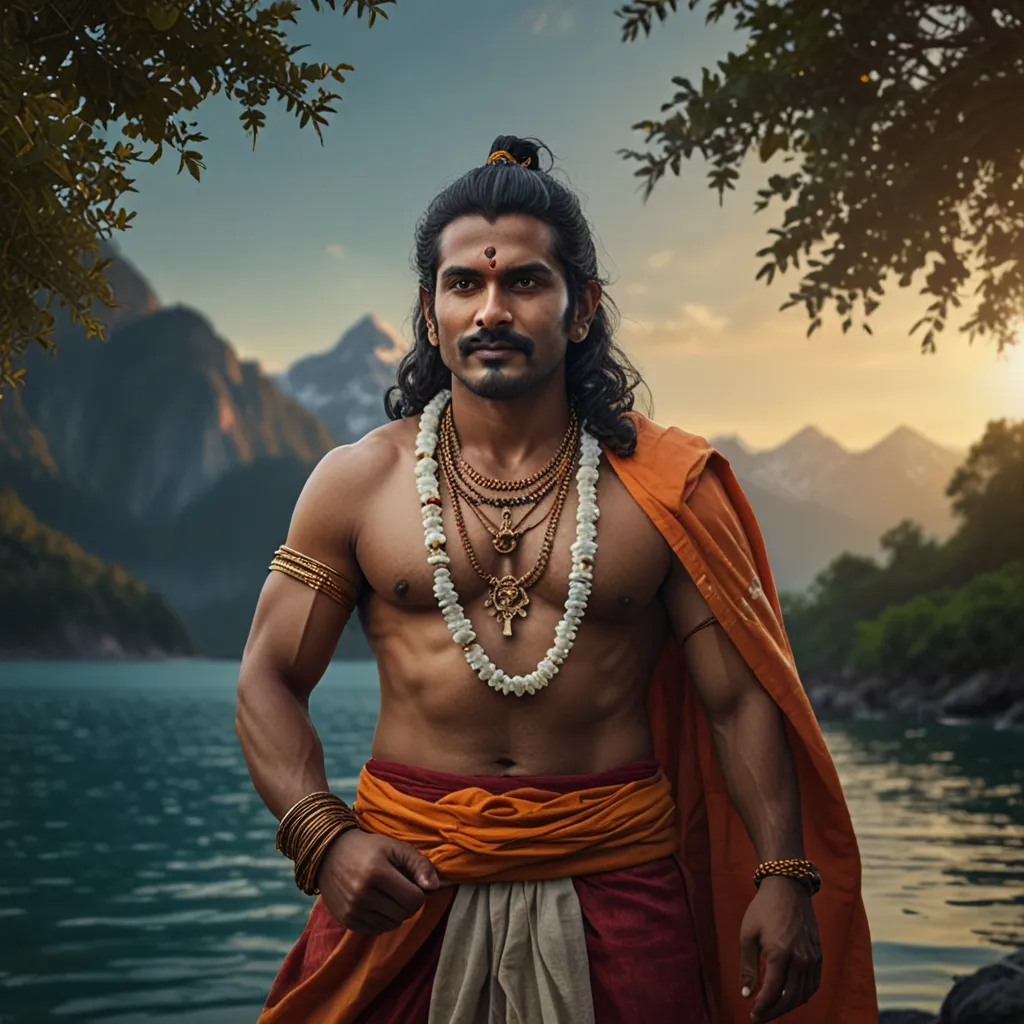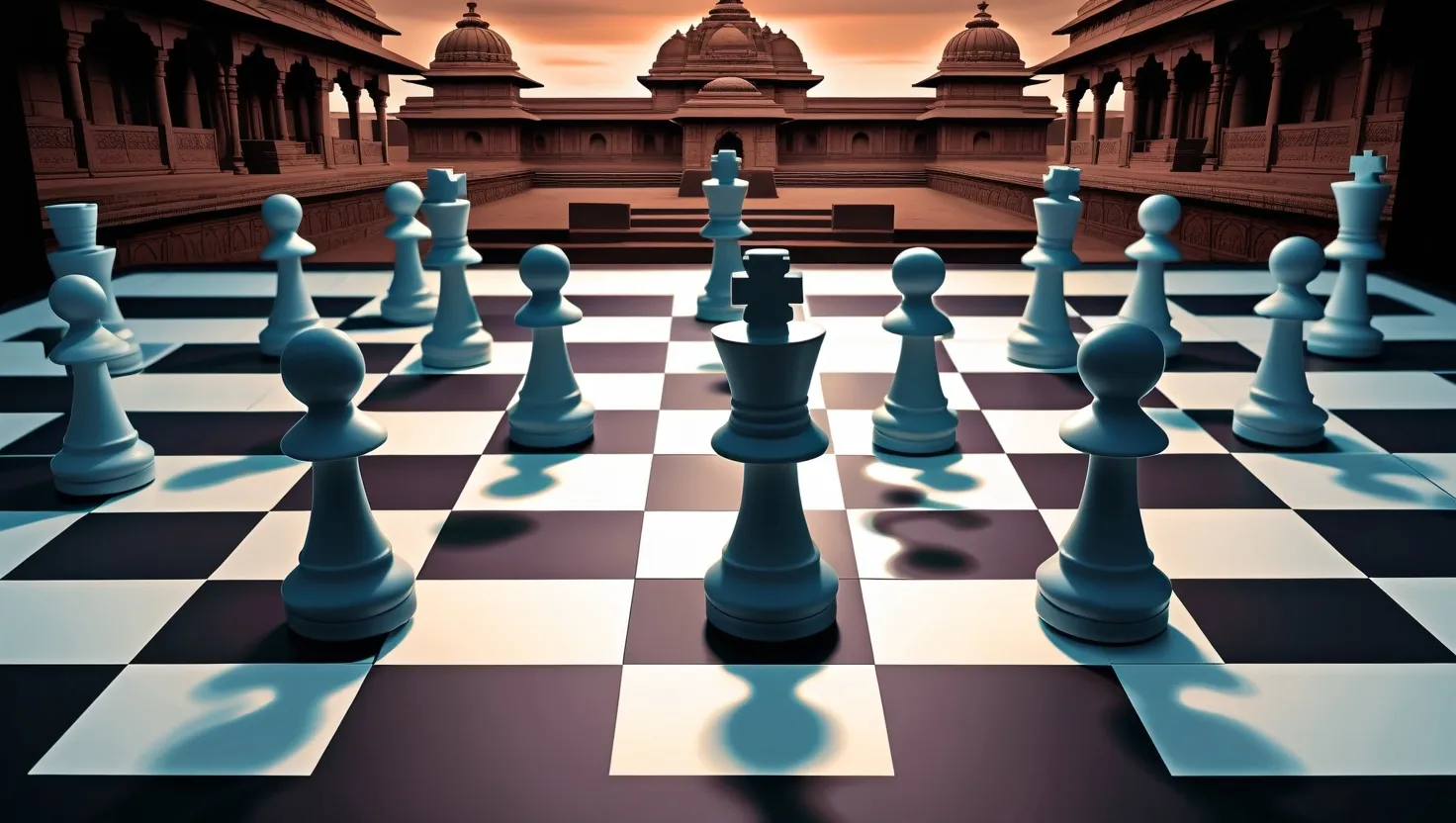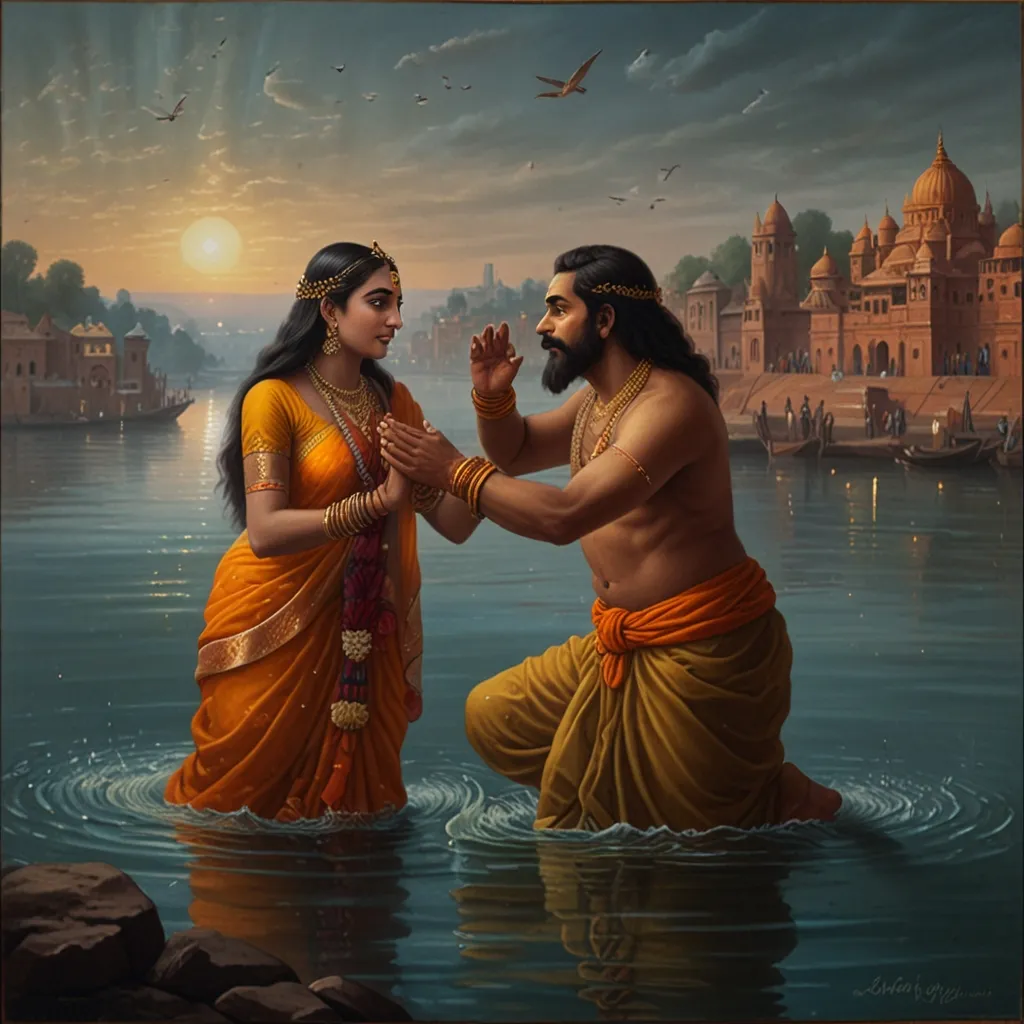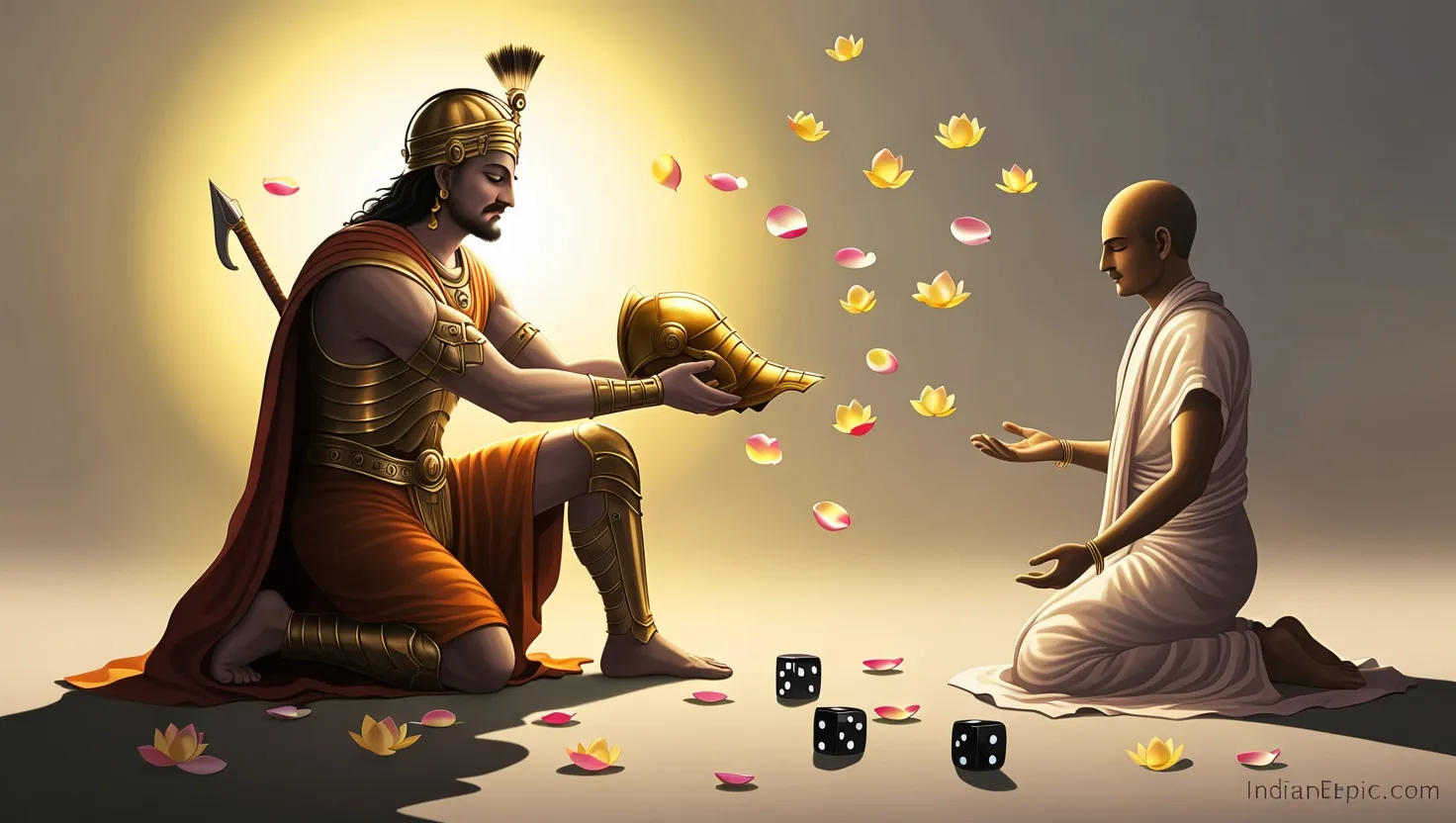Sage Agastya: The Powerhouse of Wisdom and Mystical Feats
Back in the day, in the enchanted world of Hindu mythology, there was this remarkable sage named Agastya. Known for his otherworldly powers and mind-blowing wisdom, his tales are woven into the epic sagas of the Mahabharata and Ramayana, painting a vivid picture of his legendary deeds and divine connections.
Now, Agastya wasn’t your everyday sage. He lived smack in the heart of the Dandaka forest, nestled on the southern slopes of the Vindhya mountains. His hermitage was a spiritual hotspot where he lived with his stunningly beautiful and brainy wife, Lopamudra. Raised by the king of Vidarbha, Lopamudra had it all: looks, smarts, and a burning desire for a cozy family life.
One day, she dropped a bombshell on Agastya. She wanted to settle down, have a kid, and enjoy a life filled with love and warmth. Agastya, though taken aback, agreed to her wish but threw in a curveball. To give her the lavish lifestyle she dreamt of, he needed wealth. So, off he went, embarking on a wild quest to gather riches.
Agastya’s journey was like a roller coaster. He visited numerous kings, including King Śrutarvā, King Bradhnāśva, and King Trasadasyu. Despite their overflowing wealth, none of them had any spare change and turned him down. Finally, Agastya landed at the doorstep of Ilvala, a wealthy asura who lived with his devilish brother Vātāpi in the city of Manimatpattana. These two were notorious for their wicked tricks on Brahmins.
Ilvala and Vātāpi had a macabre ritual. Ilvala would morph Vātāpi into a goat, cook him, and serve the meat to unsuspecting Brahmins. Post-feast, Ilvala would call out, “Vātāpi, come out!” and BAM! Vātāpi would burst out from the poor Brahmin’s stomach, killing him instantly. This gruesome tradition had claimed many lives.
When Agastya rocked up at Ilvala’s crib, he was treated to the usual feast. Unaware of the sinister plot, Agastya devoured the meat, which was actually Vātāpi. After the meal, Ilvala hollered, “Vātāpi, come out!” But surprise, surprise, nothing happened. Agastya had completely digested Vātāpi, putting an end to their deadly game. Enraged, Ilvala attacked, but Agastya swiftly dispatched him too.
Another jaw-dropping episode in Agastya’s saga involved his epic showdown with the ocean. It was a time of chaos, as demons called Kālakeyas had sought refuge in the ocean’s depths. These demons wreaked havoc, attacking hermitages and slaughtering sages. Unable to trace the demons, the gods turned to Agastya for help.
Agastya, wielding his immense powers, decided the only way to reveal the hidden demons was to gulp down the entire ocean. Yep, you read that right. As the gods and sages watched in awe, Agastya drank up the ocean, exposing the demons, who were promptly wiped out by the gods. However, this left Earth in a bit of a pickle—now ocean-less and in great distress.
The gods begged Agastya to restore the ocean, but he explained that it was a one-way trip; he couldn’t give back the water. He suggested they find another solution. Enter Bhagīratha, who performed intense prayers to Brahma, Ganga, and Shiva for eons. Finally, the divine river Ganga descended to Earth, refilling the ocean’s void.
Agastya’s story also ties into the Pandavas’ legends during their epic journey. While visiting the holy Yāmuna mountain in the Himalayas, Bhīma stumbled upon a monstrous serpent in a cave. Despite his Herculean strength, Bhīma couldn’t break free from its grip. The serpent, formerly known as Nahuṣa, a cursed king from the Sūrya dynasty, revealed his plight. Dharmaputra, looking for Bhīma, heard Nahuṣa’s story, leading to his redemption and ascent to heaven.
Agastya’s influence stretches far and wide, often mentioned in the Puranas as one of the seven great sages of Hinduism. His descendants are held in high esteem, and his legacy still resonates. In the Ramayana, he’s portrayed as a sage capable of feats beyond even the gods’ reach. He’s known for asking the towering Vindhya mountains to lower themselves, allowing the Sun, Moon, and all living beings to pass by easily.
Wrapping it all up, Agastya’s life is nothing short of an epic testament to his superhuman powers and his crucial role in maintaining the universe’s balance. Though his stories seem fantastical, they highlight his wisdom and strength, making him a revered figure in Hindu mythology. His remarkable feats and divine contributions continue to inspire and fascinate generations.






